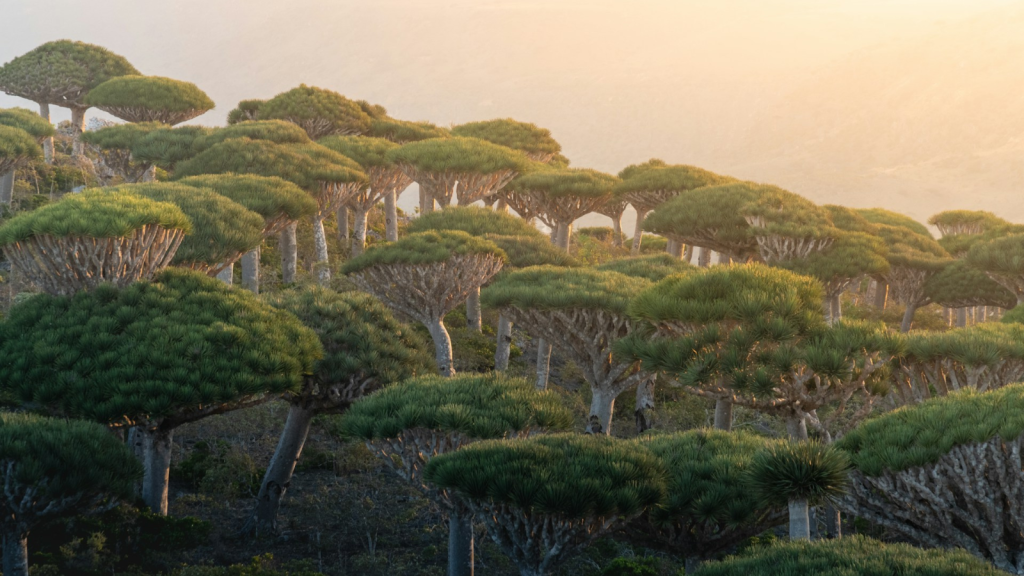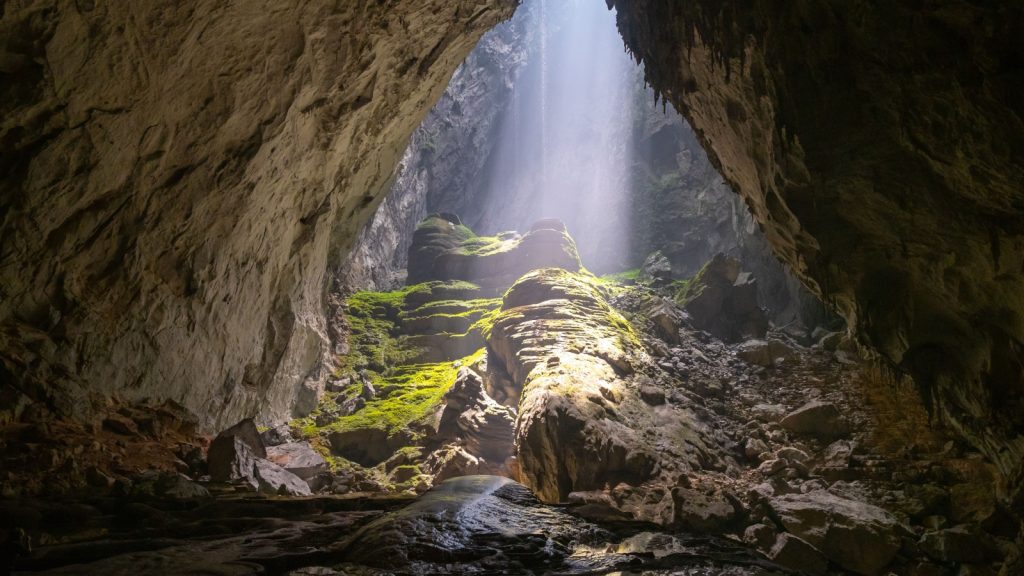Nature never fails to amaze us with its hidden treasures. While most of us know about the Grand Canyon or the Great Barrier Reef, there are countless lesser-known wonders waiting to be discovered. These secret spots are often tucked away in remote corners of the world, far from the usual tourist trails. They offer a glimpse into the raw beauty of our planet, untouched by human hands. From mysterious caves to otherworldly landscapes, these hidden gems will spark your wanderlust and remind you of the incredible diversity of our natural world. Ready for an adventure off the beaten path?
The Marble Caves of Chile Chico

Nestled in the Patagonian Andes, these stunning caves are a masterpiece of nature’s artistry. Carved by water over thousands of years, their swirling patterns of blue, grey, and white resemble a massive marble sculpture. The caves are only accessible by boat, adding to their air of mystery and exclusivity. The changing light throughout the day creates a constantly shifting palette of colours on the cave walls.
Zhangjiajie National Forest Park, China

This park inspired the floating mountains in the film Avatar, and it’s easy to see why. Towering sandstone pillars rise from the mist-shrouded forest floor, creating an otherworldly landscape. Narrow walkways and glass bridges offer heart-stopping views of this unique ecosystem. The park is home to over 3,000 sandstone pillars, some reaching heights of over 1,000 metres.
Socotra Island, Yemen

Often called “the most alien-looking place on Earth,” Socotra is home to plants and animals found nowhere else on the planet. The iconic Dragon Blood Tree, with its umbrella-shaped canopy, is just one of the bizarre life forms that have evolved in this isolated island ecosystem. Socotra has been separated from mainland Africa for at least 6 million years, allowing its unique flora and fauna to evolve in isolation.
Dallol, Ethiopia

Dallol is one of the hottest place on Earth, with an average annual temperature of 35°C (95°F). Its otherworldly landscape of acidic hot springs, salt formations, and mineral deposits creates a riot of colours that seem almost too vivid to be real. The area is part of the Danakil Depression, one of the lowest and most tectonically active areas on the planet.
Spotted Lake, Canada

This small lake in British Columbia is famous for its colourful spots, which change hue throughout the year. The spots are created by mineral deposits, and their colours shift from blue to green to yellow depending on the season and mineral concentration. The lake contains some of the highest concentrations of minerals in any lake in the world, including magnesium sulfate, calcium, and sodium sulphates.
Salar de Uyuni, Bolivia

When it rains, this massive salt flat transforms into the world’s largest mirror, reflecting the sky so perfectly that it seems to disappear. During the dry season, the cracked salt surface creates geometric patterns that stretch as far as the eye can see. The salt flat contains over 10 billion tons of salt and covers an area of over 4,000 square miles.
Crooked Forest, Poland

This mysterious grove of pine trees all bend at a 90-degree angle near their bases before curving back upright. No one knows for sure what caused this unusual growth pattern, leading to numerous theories and legends. The forest contains about 400 pines, all bent northward at the same angle and height.
Waitomo Glowworm Caves, New Zealand

These caves are home to thousands of bioluminescent glowworms that create a starry night sky effect on the cave ceilings. Visitors can take boat tours through the silent, glowing caverns for a truly magical experience. The glowworms, known scientifically as Arachnocampa luminosa, are unique to New Zealand and use their light to attract prey.
Hraunfossar, Iceland

These “lava falls” aren’t really waterfalls at all, but a series of springs that emerge from under a lava field. The clear, bright blue water contrasts beautifully with the dark lava rocks and vibrant autumn colours of the surrounding vegetation. The falls stretch for nearly a kilometre along the Hvítá River, creating a series of cascades and rapids.
Tianzi Mountains, China

These towering sandstone pillars seem to defy gravity, rising sharply from the forested valley floor. Mist often swirls around the peaks, creating an ethereal, dreamlike landscape that has inspired countless Chinese artworks and legends. The mountains are part of the Wulingyuan Scenic Area, a UNESCO World Heritage site that covers over 26,000 hectares.
Hang Son Doong Cave, Vietnam

Discovered in 1991, this is the world’s largest known cave passage. It’s so massive that it has its own weather system, jungle, and river. Exploring this underground world feels like stepping into a lost prehistoric realm. The cave is large enough to fit a 40-story skyscraper inside its largest chamber.
Fly Geyser, Nevada, USA

This colourful geyser was created accidentally by a well-drilling operation in 1964. The minerals in the water have created a rainbow-hued mound, while the continuously spraying water forms ever-changing sculptures. The geyser spouts water up to 5 feet in the air, depositing minerals that continue to grow the mound by several inches each year.
Caño Cristales, Colombia

Known as the “River of Five Colours,” this stream erupts in a vivid display of reds, yellows, greens, blues, and blacks for a brief period each year. The colours are created by a unique species of plant that grows on the river bottom. The best time to see the river in its full colourful glory is between July and November when water levels are just right.
Chocolate Hills, Philippines

These perfectly cone-shaped hills, covered in grass that turns brown in the dry season, look like giant chocolate drops dotting the landscape. There are over 1,000 of these uniformly shaped mounds, creating a surreal, almost artificial-looking vista. The hills, which range from 30 to 50 metres high, are actually limestone formations covered in grass.
Darvaza Gas Crater, Turkmenistan

Often called the “Door to Hell,” this fiery pit has been burning continuously since 1971. It was created when Soviet geologists accidentally drilled into a massive underground natural gas cavern, causing the ground to collapse and the gas to ignite. The crater is 69 metres wide and 30 metres deep, with hundreds of fires burning inside.
Katy Willis is a writer, master herbalist, master gardener, and certified canine nutritionist who has been writing since 2002. She’s finds joy in learning new and interesting things, and finds history, science, and nature endlessly fascinating.

